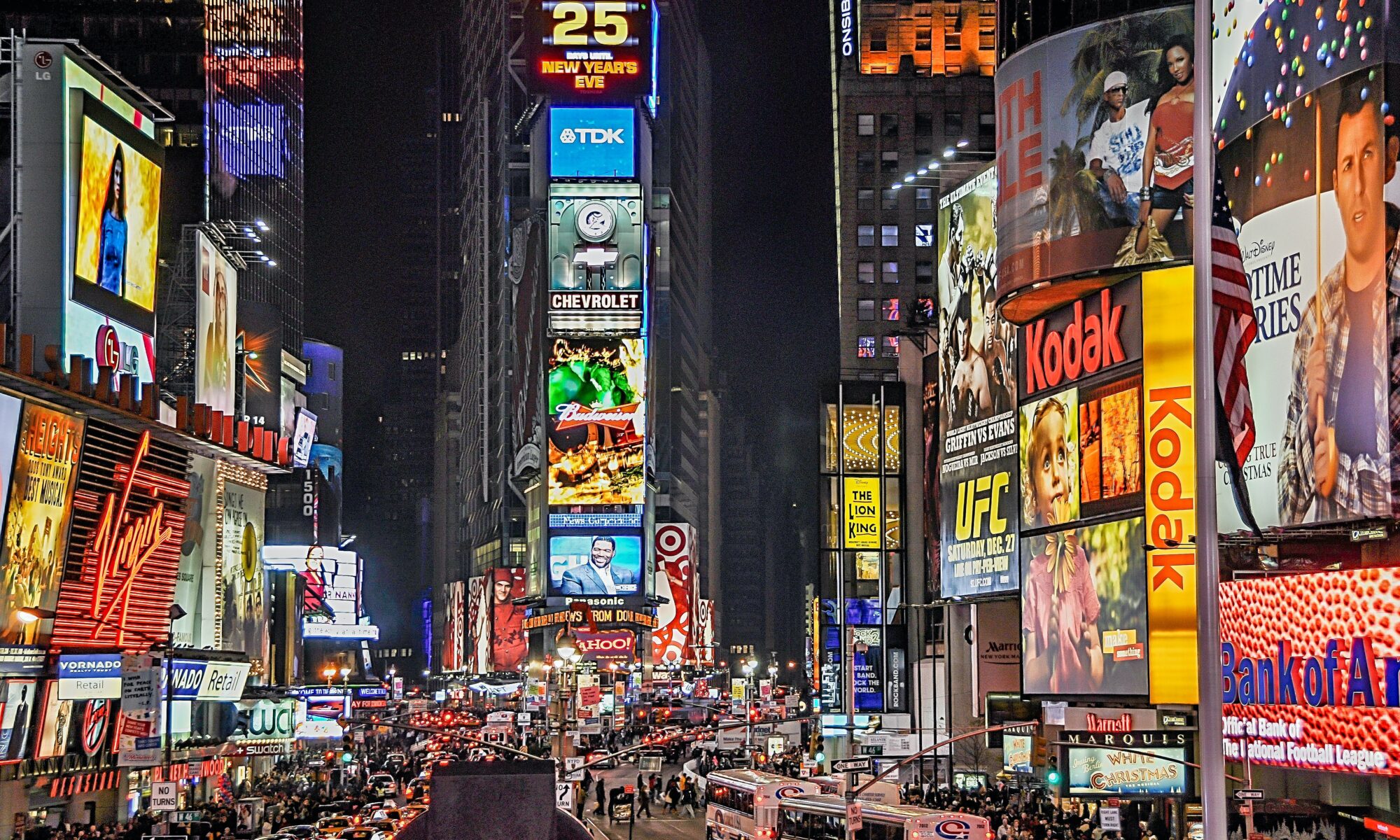Modern advertising lives in an era marked by the emergence of new networks and advanced tools that help us do much more than what was ever possible before.
However, in order to peek at the future of advertising, we must first look back and reflect on how far we have come from where humans first started marketing and advertising.
THE EARLIEST EVIDENCE OF AN AD DATES BACK TO 3,000 BC
One of the oldest forms of marketing, advertising is the art of crafting messages and deploying various psychological approaches to entice, encourage and influence someone to act decisively, quite often in the form of purchasing a product or service. Quality advertising is intended to be powerful, compelling, and even daring at times to leave a remarkable impact on its target audience.
Advertising has made great strides in captivating buyers, be it the Egyptian steel carvings—a papyrus from 3,000 B.C. created on behalf of a slaveholder searching for one of his lost slaves, the first recorded ad in history—or the annoying YouTube ads, the form, and techniques of advertising have evolved with technology.

The future will be similar to today (as the end goal will always be the same), but the art would be executed with new tools. Naturally, the majority of the advertising innovations that will shape the next decade have already begun. It is, however, difficult to predict which of these changes will have the greatest impact on the world.
BRANDS THAT DO ADS WELL TODAY
Creativity and originality are two characteristics shared by brands with effective commercials. The strategies that allow the audience to connect with these businesses are what help us remember them, leaving an indelible mark on history as these brands did.
- Coca-Cola: The ‘Share a Coke’ campaign in 2011 engaged the audience with customizable labels on their bottles, gradually increasing the sales of the beverage, and being remembered for its innovative advertising strategy.
- Zomato: From attractive deals to an innovative approach to social media, Zomato has a lengthy list of accomplishments to look into, illustrating the wonders that creativity and great communication can produce.
- Apple: Apple goods essentially transformed their respective market spaces with their marketing tactics. Apple employs two distinct strategies: product placement with celebrities and in popular shows, and media buzz generated by positive reviews.
- Amazon: Amazon’s Christmas commercial in 2020 showing a ballerina for whom “the show must go on” despite the coronavirus outbreak disrupting her performance preparations, connected with the audience with a message of a hopeful spirit.
Advertisements are designed to sell something to that audience, but they don’t always include a product for sale. Non-product advertising is a sort of marketing in which a company tries to promote an idea that it believes is significant. This style of advertising usually focuses on features that go beyond conventional commercial activities with various groups using non-product advertising to raise public awareness of issues or activities.
PEEKING INTO THE FUTURE
It often seems like advertising companies no longer want us to remember the technical specifications of their products; rather, they want us to feel certain emotions when we think about or interact with them, causing us to form a strong connection with the brand. The “woke” marketing strategy of inducing strong emotions focusing on social concerns is an effective strategy used by brands for marketing campaigns (such as Nestle’s commitment to sustainability by 2025).
With the addition of virtual and augmented realities and the idea of the metaverse—a network of interactive 3D virtual worlds focused on social connection—the present is only a sliver of what the future may hold.
THE POWER OF THE METAVERSE
The metaverse was conceptualized as a sci-fi term but is gradually becoming a supposedly real thing. Facebook renamed itself ‘Meta’, which was not a hasty or unexpected decision, but rather a calibrated one. And besides, they are a technology company whose goal is to stay ahead of the curve with industry developments.
The metaverse will envelop us and become our new normal. It will allow us to immerse ourselves in interactive experiences and share them in real-time with people all around the world. This will affect human behavior, and marketers would need to adopt various new marketing tactics and strategies. Through interactive marketing campaigns, social media performance will reach new heights, and paid social will become a thing of the past.
Augmented and virtual realities will be the two main portals into the metaverse. One in which we utilize technology to transport ourselves to another world without having to leave the comfort of our couch, and the other in which the outside world becomes participatory. Virtual reality will engross us, while augmented reality will bring the metaverse to life.

Without a doubt, this new technology will provide advertisers with fresh ways to reach out to targeted users. VR, among other things, makes it safer for people to interact with one another in video games, clubs, and shows.
Many have noticed an increase in learning when virtual technology is used in an educational setting as more young people become interested in it. Manufacturers of virtual reality headsets, still, normally produce their products in markets with an average age restriction of 13+.
THE CHANGING FACE OF ADVERTISING
The internet removed the physical limitations of classic advertising, there are essentially unlimited billboards online. Immersive advertising, for example, the videos that play between your social media posts, have become so mainstream people barely notice them.
Immersive advertising communicates a company’s message(s) in a way that marketing and public relations firms work tirelessly to convey across multiple distribution channels. Naturally, the Metaverse, which is a limitless virtual expression of the world, is prime real estate for advertisers. Especially if it gathers traction in the near future.
Unlike the non-immersive ads that don’t surround the user, immersive ads in the virtual realm will likely target all senses. Gesture controls, computer vision, and motion tracking are forms of multimedia technology that conform to the user’s input and gestures and are used by virtual reality platforms to provide a tactical “real” experience.
Huggies used immersive advertising recently with a campaign where their customers could access an informative link with a virtual diaper appearing on the screen to show how it absorbs the liquid flowing through it, creating the illusion of being almost real and showing its product in a novel way that wasn’t possible in the physical world.
While we are looking at the developing aspects of advertising and the effects digitalization has on it, there is another important element that cannot be overlooked—cookies.
COOKIES AND ADVERTISING
For the longest time, cookies have played an essential part in advertising and digital marketing, with claims that advertising cookies are responsible for the rise of digital marketing.
While it may be the most commonly heard data element, many of us are still unaware of its importance in our browsing lives. Cookies are small text files that a website saves to a user’s device to track their behavior and record their website choices.
When it comes to planning and measuring a successful digital marketing campaign, these cookies are an essential tool for digital marketers that are involved in practically everything a user does on the internet, from remembering their login information to assisting businesses in creating relevant advertisements.
The news of the death of third-party cookies making rounds on the internet, with Google planning to phase them out by 2023 with alternative tracking identifiers being developed. For the privacy concerns expressed by users over the usage of cookies, this announcement may not have come as a surprise, but many advertisers are perplexed about how to handle the situation.
HOW WILL ADVERTISING COPE WITHOUT THIRD-PARTY COOKIES?
Google Topics (formerly Google FLoCs), a tool developed by Google’s Privacy Sandbox, will be used to target individuals based on larger groups of people who share similar interests and behaviors, indicating that advertisers will no longer be able to monitor users via third-party cookies and will instead need to find new ways to retarget web users.
However, if third-party cookies are not substituted, up to 90% of all display impressions will be without an ID, implying that Google’s Privacy Sandbox solutions will not suffice. One method for locating the required information is to use first-party data.
Unified ID 2.0, a joint industry effort to generate web user identification while maintaining user privacy, is another example. When a user logs in to a website with their email address, an identifier is generated using an unencrypted version of that ID. To ensure security, the identifier will regenerate themselves on a routine basis as Unified ID 2.0, unlike cookies, was created to allow internet users to define their preferences for how their data is shared, putting the consumer in charge.
In the post-cookie scenario, a variety of ways might be applied to efficiently target at scale, including workarounds to intelligently target ads without direct identifiers. We will undoubtedly see a substitute to cookies, where netizens can choose to share data and receive ads, as a positive development with the future programmatic ecosystem being more flexible, integrating the highest performing alternative, having higher ad relevance, a better user experience, and more cost-effective brand targeting as potential outcomes.
Everything will change as a result of increasing digitalization, particularly in the advertising industry, from human behavior to corporate models and marketing methods. This kind of transition can be foreseen, as businesses have already started to explore the possibilities. The only certainty is that, in the future, marketers would reach a far larger but more targeted audience through social media performance and paid advertising.
Written by Upasana Sharma,
Edited by Krishna Rathore and Suranjan Das.
